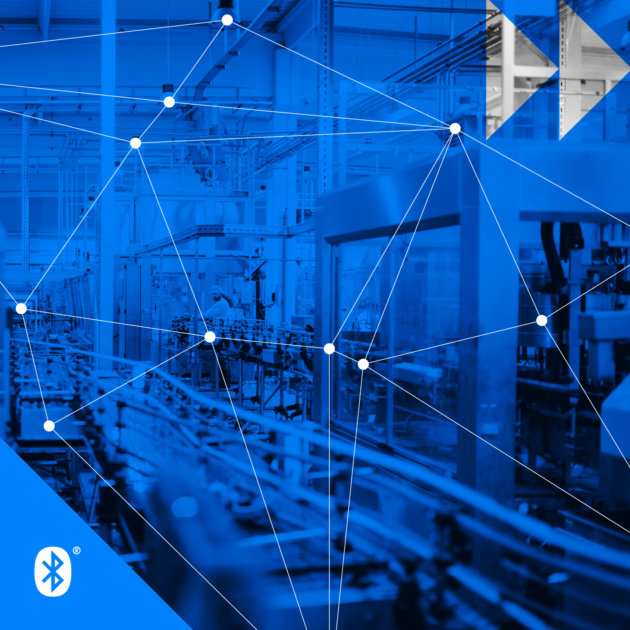by Gary Mintchell | Jun 30, 2020 | Events, News, Technology, Wireless
• Enables telcos to monetize 5G networks and edge infrastructure by delivering new low latency cloud services at the edge via an app catalog
Remember two things if you meet the typical profile of a reader of this blog—it’s all happening at the edge and production/manufacturing are the edge; and data is the gold we’re mining and hype of the cloud is so over, it’s about gathering, analyzing, orchestrating, and sending all the data gathered at the edge to some sort of cloud.
I’ve been watching developments of 5G (and not so much WiFi6, but it’s a partner) for some time. It’s hard to separate the hype from reality—something that always happens at the early stage. Marketers can’t prevent themselves from trying to hype their companies as ahead of the curve, while engineers have been quietly pushing the curve.
So I was able to watch some sessions at the Hewlett Packard Enterprise (HPE) Discover Virtual Experience on this very topic. HPE’s Aruba is a leading supplier of communication products. Following is the lead announcement from last week.
HPE Edge Orchestrator, a SaaS-based offering enables telcos to deploy innovative new edge computing services to customers via IT infrastructure located at the edge of telco networks or on customer premises. With the HPE Edge Orchestrator solution, telcos can extend their offerings to include a catalog of edge computing applications which customers can deploy with a single click, across hundreds of locations. HPE Edge Orchestrator enables telcos to monetize the 5G network and telco cloud while bringing lower latency, increased security and enhanced end-user experiences to their customers.
Analysts expect the next decade to see the rise of edge computing where data intensive workloads such as AI, machine learning (ML), augmented and virtual reality apps will be hosted at the edge. Telcos already have thousands of edge sites powering mobile and fixed networks, so they are uniquely positioned to lead the edge services market. In fact according to a recent IDC study, 40% of enterprises trust their telco to be their main provider of edge solutions. However, until now telcos haven’t had the tools to do this themselves without relying on public cloud providers.
HPE Edge Orchestrator gives the power back to telcos. Now they can offer value-added edge services in their own right and can move from being primarily bandwidth providers to offering innovative edge computing applications, such as AI-powered video analytics, industrial automation and VR retail services. New revenue from these high-value enterprise services will also help to cover the significant cost of deploying new 5G infrastructure.
• Telcos can move from being primarily bandwidth providers to offering innovative edge computing applications
HPE Edge Orchestrator unleashes the deployment and configuration of customer applications, provided as virtual machines or containers, at geographically distributed edge locations owned by telcos, such as existing central offices or on customer premises. Customers can access edge applications via a self-service app catalog for simple management, monitoring and the deployment of an app to an edge device with one-click operation.
HPE Edge Orchestrator enables enterprises to easily combine their applications with network services offered by telcos, thus creating an end-to-end flow across the edge. Today, HPE Edge Orchestrator supports Multi-access Edge Computing (MEC) with other network-as-a-service (NaaS) functions being added to the catalog over time. The MEC platform enables applications to run at the edge, while delivering network services that ensure a dynamic routing of edge traffic in 4G, 5G, and Wi-Fi environments.
To capitalize on the edge services opportunity, telcos need to bring applications from the cloud out to the edge where the data exists. With HPE Edge Orchestrator, along with HPE Edgeline and ProLiant servers, telcos can position application intelligence at the edge and unlock major business benefits for their customers:
- Lower latency: When applications can process requests locally instead of routing them to a data center, they can deliver much better performance. This translates to a better user experience for any business application. For the new generation of ultra-low-latency use cases like augmented reality and industrial automation, short round-trip times are absolutely essential.
- Bandwidth optimization: Positioning application intelligence out at the edge, such as doing number-crunching closer to where the numbers are generated, greatly reduces the wide-area network (WAN) bandwidth the application requires. This translates to lower WAN costs for businesses and less traffic congestion in telco core and metro networks. Applications like video analytics become much more efficient and, as a result, applicable to use cases that might not have been viable in the past.
- Improved security and privacy: Any time businesses transmit data over a network, they’re potentially exposing it to security threats. For the most sensitive information, some businesses want to keep everything onsite. In regions with strict privacy protections like the European Union, some applications may simply not be viable unless they can process all personally identifiable information (PII) locally.
New edge computing offerings start with compute platforms optimized for deployment at remote operator sites (central offices, radio towers, other point of presence (POP) locations), or even directly at the customer premises. For example, HPE Edgeline Converged Edge Servers, such as the EL4000 and EL8000, have been specifically designed to run at the edge. Platforms like these host all of the components needed to manage the edge computing workloads in containers or VMs.
HPE Edge Orchestrator provides a centralized, comprehensive, hardware agnostic orchestration platform to provision, configure, and perform general management functions for all components of edge computing. HPE Edge Orchestrator is also multi-tenant by design.
Telcos can give diverse enterprise customers their own “private” interfaces to manage their workloads, sites, edge devices, and services, while their own teams manage the entire CSP edge computing portfolio as a single system. HPE Edge Orchestrator can also work in conjunction with the recently announced Aruba Edge Services Platform (ESP), enabling enterprises to easily integrate both Wi-Fi-based and telco services.

by Gary Mintchell | Dec 6, 2019 | Internet of Things, Networking, Wireless
Suddenly the wireless networking side of IoT connectivity is hitting my radar. Since the culmination of the “wireless wars” of 10 years ago, this technology/market area has settled into supplying usable products. This information came from Honeywell—In short, by supplying ISA100 Wireless and WirelessHART connectivity to Cisco’s next-generation Wi-Fi Access Point, Honeywell’s OneWireless IoT Module can help users increase industrial plant productivity, worker safety, and digital transformation readiness.
Honeywell is developing a OneWireless IoT Module for the next-generation of Cisco’s industrial access points, the Cisco Catalyst IW6300 Heavy Duty Series Access Point. The Honeywell and Cisco technologies will form the backbone of Honeywell’s OneWireless Network.
The joint wireless solution enables Honeywell customers to quickly and easily deploy wireless technologies as an extension of their Experion Process Knowledge System (PKS). Combining the leading IT network technology by from Cisco and the leading Honeywell OneWireless multi-protocol technology provides customers with a single infrastructure that meets all their industrial wireless needs.
“For the past decade, Cisco and Honeywell have worked together to deliver secure, wireless solutions to connect mobile workers and field instrumentation in the most challenging process manufacturing environments,” said Liz Centoni, senior vice president and general manager, Cisco IoT. “We’ve had great success in bringing IT and operational teams together to reduce complexity and improve efficiency. Now, we are building on that foundation to extend the power of intent-based networking to the IoT edge.”
When combined with the Honeywell OneWireless IoT Module, the Cisco Catalyst IW6300 Heavy Duty Series Access Point offers the security, speed, and network performance needed to allow the seamless extension of the process control network into the field.
“The OneWireless IoT Module is Honeywell’s latest innovation as a leader in wireless technology,” said Diederik Mols, business director Industrial Wireless, Honeywell Process Solutions. “Our customers will benefit from OneWireless functioning as a seamless extension of Experion PKS and simplified deployment made possible by integrating the IoT module and aerials into a single unit.”

by Gary Mintchell | Sep 3, 2019 | Operator Interface, Safety, Wireless, Workforce
I was working with controls, instrumentation, computers, software when I traded it in for media work first with Control Engineering and then with Automation World. Through a lot of those media years, Honeywell was one of the Big Four or Five in process control and systems. Over the past 6-10 years, those big companies have diverged into differing specialities. It’s been interesting to observe that part of the industrial market.
Honeywell began leveraging expertise of its various divisions into wireless, mobile, and wearables. Much of the emphasis has been safety with a spillover effect into productivity.
Wearables comprise a growing market category with much promise. I’ve had the opportunity to try on a number of different products. These increasingly solve real world problems with ever reducing interference in the real work of the person.
In this latest release, Honeywell announced that Braskem Idesa has adopted a hands-free, wearable connected technology solution at its plant in Veracruz, Mexico. Honeywell’s Intelligent Wearables will allow Braskem Idesa to improve productivity and compliance with process procedures, capture the expertise of experienced workers and provide critical insights and information effectively to trainees and support workers in the field.

Honeywell is delivering a complete outcome-based solution that tracks specific key performance indicators and integrates hardware, software and services, and a full Wi-Fi infrastructure to support use of the solution across the plant. The wearable technology will also accelerate training and ensure safety for field operators at the Braskem Idesa facility.
“With this solution, Braskem Idesa is embracing the digital transformation that will enable us to retain our leadership in the petrochemicals industry,” said Roberto Velasco Gutiérrez, industrial director, Braskem Idesa. “Capturing all the relevant expertise and data within the organization and getting it to workers wherever and whenever needed, will help get trainees safely into the field faster and ensure that every worker operates to Braskem Idesa’s best standards.”
A comprehensive range of applications from Honeywell will boost the speed, safety and reliability of field workers thanks to the following services:
- Expert on Call: Provides field workers with live, real-time access to experts in the central control room or elsewhere for troubleshooting, support and advice
- Video support: Enables users to view videos demonstrating key tasks
- Paperless rounds: Provides step-by-step instructions for common and complex tasks
“Braskem Idesa has not only taken an important step toward Industry 4.0 but has now also replaced paper-based and manual operations with a sophisticated solution that’s both digital and wireless,” said Vincent Higgins, director of technology and innovation, Honeywell Connected Enterprise, Industrial. “Wearable, voice-controlled computer headsets and software eliminate the need for clipboards, pens, and flashlights. Our offering will help Braskem Idesa capture expertise and document critical tasks to ensure operational compliance.”
Honeywell’s solution for field worker competency and productivity enables Braskem Idesa to tie its plant performance directly to the performance of its workers, critical to the success of any industrial enterprise. By connecting field workers with remote advice, Honeywell Intelligent Wearables also reduce the need for site visits from experts, empower workers to continue learning, become their best and effectively share their knowledge with peers.

by Gary Mintchell | Apr 30, 2019 | Internet of Things, Technology, Wireless
Industrial Internet of Things begins with “things”, of course. But it really needs to end with a decision by either a human or a control. In between the thing and the human is software that takes data input from the thing, analyses the data, and provides information in a digestible form.
Swift Sensors not only manufactures wireless sensor systems, it provides a Manufacturing Analytics Dashboard. Newly released are eleven new predictive maintenance tools for the Dashboard.
These new tools add trend analytics to key manufacturing metrics of compliance, utilization, maximum, minimum and average measured values monitored by the wireless sensor system. Eleven new dashboard panels have been added for measuring analytic trends across multiple shifts.
”We have deployed more than 100 Swift Sensors in our manufacturing facility to improve operational efficiency,” said Jackson Minear, Continuous Improvement Engineer at Meggitt Airframe Systems. “We use just about every feature in the Analytics Dashboards to track utilization of our equipment as well as critical trends across multiple shifts over time. Conservatively, we’ve improved our machine utilization by 20% while saving six figures in capital equipment expenditures.”
“Our manufacturing customers, particularly those using our wireless temperature and vibration sensors, frequently ask for advanced analytics tools to improve operational efficiency through higher overall equipment effectiveness (OEE) and lower maintenance costs,” said Sam Cece, founder and CEO of Swift Sensors. “With the access to data from our wireless sensor system, Predictive Maintenance (PdM) programs can be easily created using our Manufacturing Analytics tools, which is included in the new Trend Analytics Dashboards.”
With the new dashboard panels, a trend line is calculated using the best fit line algorithm for the measurement data across each shift. The slope of the trend line represents the trend per shift, which indicates the overall tendency of the analytics value to increase or decrease by a specific amount from one shift to the next.
The trend analytics include a confidence percentage to indicate how well the trend line correlates with the historical data. A high confidence level indicates the trend is more likely to continue. Conversely, a low confidence level indicates the trend is not a reliable predictor of future values because the historical data is too chaotic.

by Gary Mintchell | Aug 14, 2018 | Automation, Networking, Wireless
Wireless mesh networking has been the source of technology and market battles for years in industrial applications. There is one that’s seldom discussed among engineers in this sector, though—Bluetooth. There exists a Bluetooth mesh standard. It’s been out a year. At this point there are more than 65 Qualified Bluetooth Mesh Products.
The dominant application to date is smart lighting systems. Smart home applications are coming along. The Bluetooth SIG talks of other industrial applications. We’ll have to see what develops. If I were an active engineer, I think I would take a look at possibilities. Bluetooth has some longevity and stability. We all use it with our smart devices. Interesting possibilities.

Following is news from the press release. Bluetooth mesh plays a role in the development of emerging markets such as Smart Building, Smart Industry, Smart Cities, and Smart Home. In the year since the release of Bluetooth mesh, more than 65 products with mesh networking capability have been qualified from leading silicon, stack, component, and end product vendors.
Bluetooth mesh networking enables many-to-many (m:m) device communications and is optimized for creating large-scale device networks. Designed to meet the scalability, reliability, and security requirements of commercial and industrial environments, Bluetooth mesh is powering smart building and smart industry implementations where tens, hundreds, or thousands of devices need to communicate with one another effectively. From factories to hospitals, airports, retail stores, and the home, Bluetooth mesh supports building services that bring real value to owners, operators, and occupants.
“Bluetooth mesh is one of a number of fundamental enablers of future IoT markets, allowing for robust, secure and scalable connectivity across the smart home, commercial building automation, industrial environments, and beyond,” said Stuart Carlaw, Chief Research Officer, ABI Research. “Bluetooth mesh, in conjunction with Bluetooth beacons, can propel these environments towards greater automation, increased sensorization, and enable valuable RTLS services. Nearly 360 million annual Bluetooth Smart Building device shipments are forecasted by 2022.”
Lighting control systems have served as a key use case driving the increase in Bluetooth mesh implementations. A building’s lighting system provides a natural grid through which all devices in a Bluetooth mesh network can pass messages and establish whole-building control, monitoring, and automation systems within a facility. This wireless lighting solution can also function as a platform to enable indoor positioning and location services – including point-of-interest solutions, indoor navigation, asset tracking, and improved space utilization.
“Bluetooth mesh has fundamentally altered the conversation around connected lighting by providing a complete, high-performing solution that allows lighting to serve a greater purpose in industrial and commercial spaces,” Mark Needham, Vice President, European Sales at Fulham Co, Inc. “A lighting system that can both help visitors find their way and allow building operators to pinpoint the location of assets within a building or collect a vast range of data from various building sensors for analysis and utilization is only the beginning of what is possible.”
In one year alone, Bluetooth mesh has paved the way for wireless lighting control solutions and has been a driving force in realizing the concept of lighting as a platform. According to ABI Research, annual commercial smart lighting equipment shipments are expected to increase fivefold by 2022.
“We are really excited about the rapid progress our member companies have made using Bluetooth mesh in just one year,” said Mark Powell, Executive Director of the Bluetooth Special Interest Group. “The Bluetooth member community dove straight into developing with the new technology, creating a growing list of product innovations that will steer the evolution and direction of commercial and industrial markets for years to come.”

by Gary Mintchell | Jun 5, 2018 | Internet of Things, Technology, Wireless
I met with the representative of an interesting company with a different take on indoor location services. Years ago I listened to a podcast called the Gillmor Gang and a famous (at the time) blogger Robert Scoble was always extolling the virtues of beacons. They will be everywhere and do all sorts of things, he repeated like a mantra.
Things got quiet, then I met Quuppa at Hannover Messe 2018. They have a beacon that has multiple antennas that does a better job of location than trying some of the older triangulation technologies.
The company has just announced a partner event, something that gives me an excuse to point you toward something interesting. I’m assuming that few if any of my readers are heading to Finland any time soon.
Quuppa, a Finnish company that delivers indoor positioning technology, announced its second annual partner event will take place June 5-7 in Helsinki, Finland. With a theme of “Defining the Future,” the event will feature speakers from Quuppa and its partner ecosystem, networking events and a Solutions Showcase Expo that demonstrates the current and future capabilities of real-time, global indoor location services and solutions. The event demonstrates the success Quuppa has had delivering on its go-to-market strategy that centers on providing an open positioning platform both in terms of hardware and software APIs, where each company focuses on what it does best, helping speed time-to-market.
The event will also highlight a day of presentations featuring “success stories,” with case study presentations that showcase the wide range of use cases for Quuppa’s unique indoor location technology. Featured success story topics include improving efficiency and customer experience in retail, asset tracking in large scale, Industry 4.0, manufacturing use cases from Japan, safety in a secure environment, generating business KPIs from location data, and employee safety indoors and outdoors.
Quuppa utilizes a unique combination of Bluetooth Low Energy (BLE) and the Angle of Arrival (AoA) methodologies, as well as advanced location algorithms that have been developed over the course of more than 15 years, to calculate highly accurate indoor positioning.
The Quuppa Ecosystem includes more than 70 best-of-breed companies worldwide that deliver best-in-class software solutions, tags and installation services, as well as system integrators and solution providers that offer end-to-end solutions. Companies across a wide range of industries, including manufacturing and logistics, retail, healthcare, sports, law enforcement and security, government and others rely on Quuppa and its ecosystem partners to unlock the full potential of indoor location-based services without compromising accuracy, compatibility or cost.
“Quuppa’s ecosystem continues to thrive, and our partner event is a place to gather and share expertise and best practices for global indoor location services,” said Fabio Belloni, head of Quuppa’s Partner Ecosystem. “What we are seeing more of as the ecosystem expands is partner companies seeking answers from their peers—not just from Quuppa—on wide-ranging topics such as how to launch a large-scale deployment, how to forge partnerships to grow in new geographic areas, how to best conduct a demo, and more. Companies are realizing they no longer need to develop everything on their own, they can choose best-of-breed solutions from our incredible ecosystem partners. It’s amazing to see how quickly the Quuppa Ecosystem is growing and the unique partnerships that are forming because of it.”
One such partnership that has emerged within the Quuppa Ecosystem is between Japanese motor manufacturer Nidec Corp. and Synapses Lab, an Italian technology design company. The companies work together utilizing Quuppa’s precision location technology, Synapses’ platform for tracking and 3D modeling, and Nidec’s electronics and engineering expertise to develop autonomous solutions that will deliver improved productivity and security in the manufacturing industry.
“Building a solid and reliable ecosystem is essential for our company,” said Domenico Mariotti, CEO and cofounder of Synapses. “Such a system enables us to tackle new challenges and different use cases every day, sometimes beating any expectations we ourselves had for our solutions.”
“In the Japanese manufacturing industry, some early birds are now trying to introduce IoT to their factories,” said Hiroshi Mochizuki, Small Precision Motor and Solutions business unit at Nidec. “They do not allow position data to have jitter, so Nidec decided to select Synapses’ platform utilizing the Quuppa Ecosystem. Synapses has successfully developed its platform, of which the filtering capability and database structure is duly optimized for Quuppa’s technology. Nidec strongly believes that problem-solving requests by its customers will be soon made, and good results in increase of productivity and security are expected to become visible in a short period of time, thanks to the availability of Synapses platform.”












